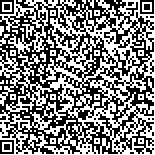下载中心
优秀审稿专家
优秀论文
相关链接
摘要

利用地面实测数据构建高精度的水稻冠层氮素含量光谱反演点模型并将其进行尺度转换,实现了水稻冠层氮素含量准实时、大区域监测。以氮素光谱敏感指数作为输入变量,冠层氮素含量数据为输出变量,利用随机森林算法构建水稻冠层氮素含量高光谱反演模型,并用苏州市水稻农田验证区数据,检验模型的普适性和有效性;利用准同步的Hyperion数据,采用对输入、输出变量进行线性变换的简单尺度转换方法实现了点模型的区域应用。结果表明:基于随机森林算法的水稻冠层氮素含量高光谱反演模型可解释、所需样本少、不会过拟合、精度高(模型在实验区的预测精度为R=0.82,验证区检验精度为R=0.73)且具有普适性;点模型基于高光谱遥感卫星影像和尺度转换进行区域应用,精度较高(R=0.81)。
Canopy Nitrogen Concentration (CNC) is a key indicator of crop yields. It is feasible to establish a real-time regional model to estimate CNC by upscaling the field-scale spectral model. This study focuses on monitoring the CNC in rice on a large scale in real-time. The Random Forest (RF) algorithm is used to establish the CNC spectral inversion model, and some vegetation indexes that are sensitive to nitrogen were selected as input parameters for the RF. CNC was selected as an output parameter. The hyperspectral and biochemical data were collected in a paddy in Changchun City, Jilin Province, China, and the data in Suzhou was used to test the model's universality and effectiveness. Two regional-scale models were developed by applying scale transformation based on the input and output variables respectively. The results show that the RFCNC model (CNC spectral inversion model based on the RF algorithm) performed accurately and significantly improved upon existing methods. R, used to validate method accuracy in Changchun and Suzhou, was 0.82 and 0.73 respectively. The regional application accuracy increased (R=0.81) through the two upscaling methods using hyperspectral remote sensing satellite images. This study suggests that this method is promising for estimating regional CNC in rice by upscaling a field-scale spectral model if the strategy is appropriately selected.

